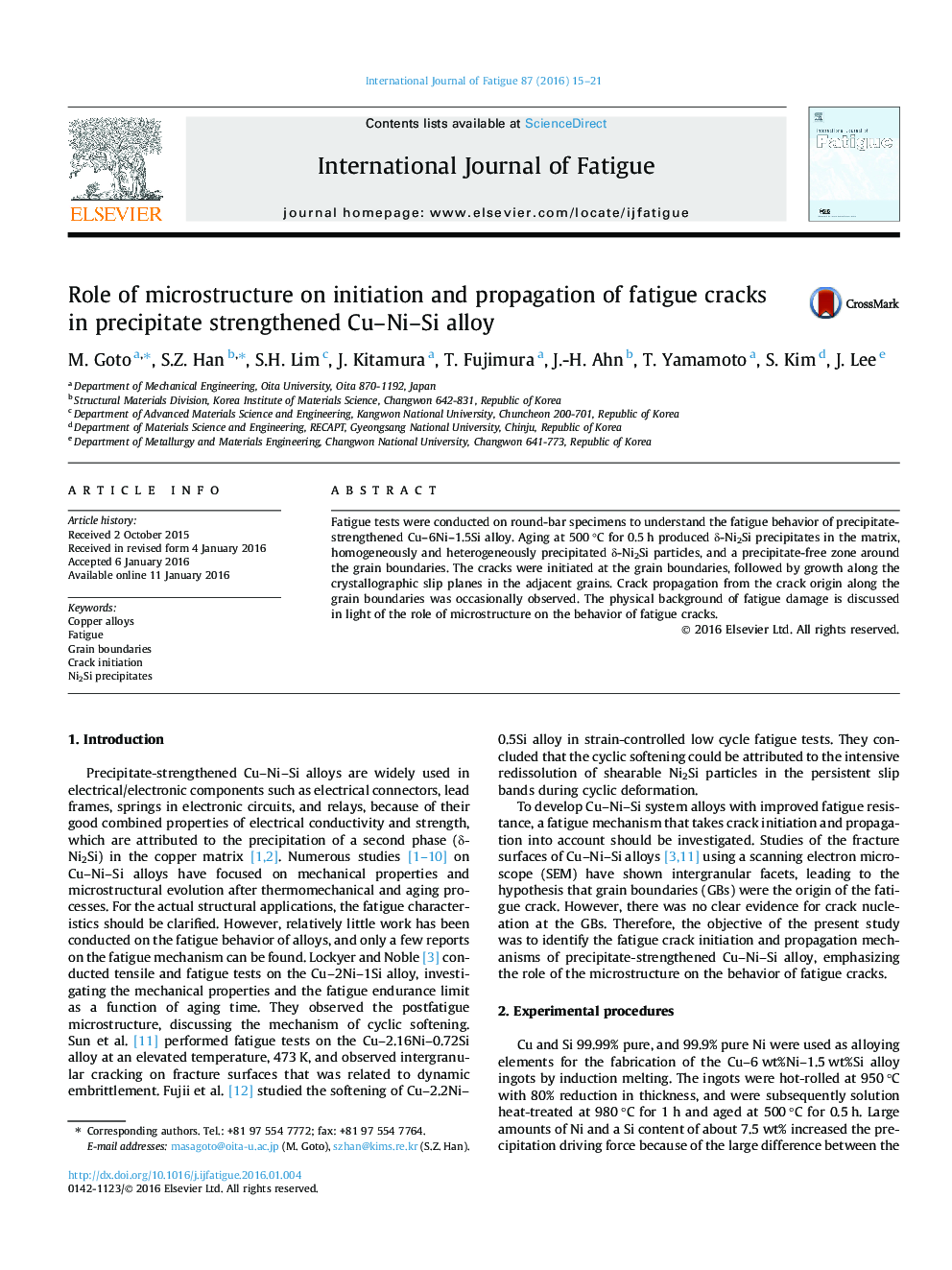| Article ID | Journal | Published Year | Pages | File Type |
|---|---|---|---|---|
| 778069 | International Journal of Fatigue | 2016 | 7 Pages |
•Fatigue cracks originated from GBs, followed by the growth along the slip planes.•Heterogeneously precipitated δ-Ni2Si particles and PFZs were formed around GB areas.•The particles/PFZ-induced localized strain was main cause of the crack initiation.•There were a small number of DP grains which had negligible effects on fatigue strength.
Fatigue tests were conducted on round-bar specimens to understand the fatigue behavior of precipitate-strengthened Cu–6Ni–1.5Si alloy. Aging at 500 °C for 0.5 h produced δ-Ni2Si precipitates in the matrix, homogeneously and heterogeneously precipitated δ-Ni2Si particles, and a precipitate-free zone around the grain boundaries. The cracks were initiated at the grain boundaries, followed by growth along the crystallographic slip planes in the adjacent grains. Crack propagation from the crack origin along the grain boundaries was occasionally observed. The physical background of fatigue damage is discussed in light of the role of microstructure on the behavior of fatigue cracks.
